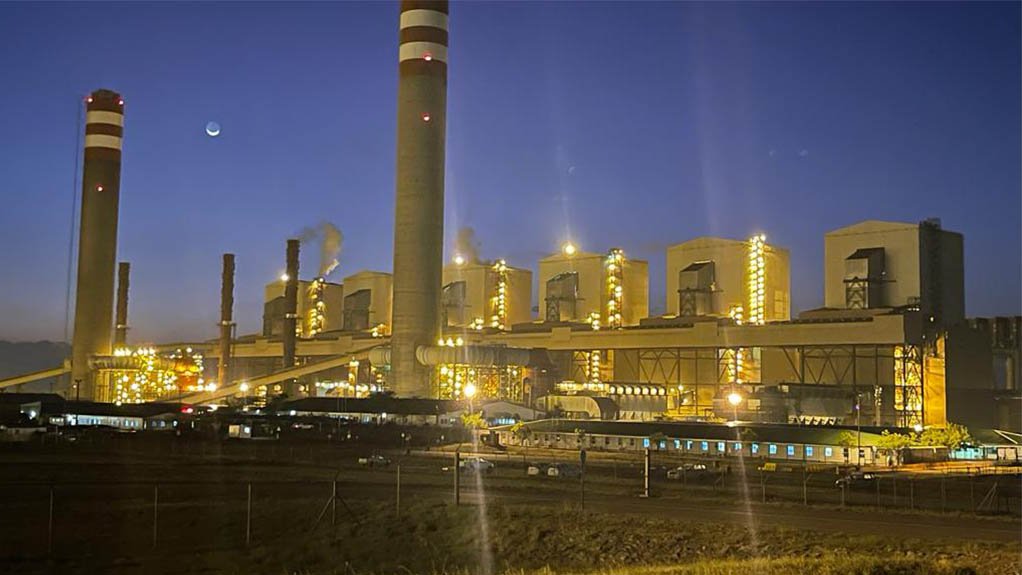

Kusile power plant project, South Africa – update


Name of the Project
Kusile power plant project.
Location
Near the Kendal power station, in the Nkangala district of Mpumalanga, in South Africa.
Project Owner/s
State-owned power utility Eskom.
Project Description
The Kusile power station project will comprise six units, each rated at an 800 MW installed capacity for a total capacity of 4 800 MW. Once completed, Kusile will be the fourth-largest coal-fired power station in the world.
The Kusile project will include a power station precinct, power station buildings, administrative buildings (control buildings and buildings for medical and security purposes), roads and a high-voltage yard.
The associated infrastructure will include a coal stockyard, coal and ash conveyors, temporary and permanent water-supply pipelines, temporary electricity supply during construction, water and wastewater treatment facilities, ash disposal systems, a railway line, limestone offloading facilities, access roads (including haul roads) and dams for water storage, as well as a railway siding and railway line to transport the limestone supply (sorbent).
The power station will be the first in South Africa to install wet flue-gas desulphurisation (FGD) – a state-of-the-art technology used to remove oxides of sulphur, such as sulphur dioxide (SO2), from exhaust flue gases in power plants that burn coal or oil.
This technology abates atmospheric emissions, in line with current international practice, to ensure compliance with air-quality standards, especially since the power station is located in a priority air-shed area.
The wet FGD plant is a totally integrated chemical plant using limestone as feedstock and producing gypsum as a by-product.
Each supercritical tower boiler will be about 115 m high. The air-cooled condensers will be built on and supported by twenty 60-m-high concrete columns.
Potential Job Creation
A comprehensive exit and outreach strategy, which aims to gradually upskill and release local labour to the job market, has been formalised in partnership with key stakeholders. This allows for project stability amid the gradual demobilisation of workers once milestones are achieved, and mitigating the risk of local community disruptions.
Capital Expenditure
R233.4-billion.
Planned Start/End Date
Kusile Unit 1 achieved commercial operation on August 30, 2017.
Kusile Unit 2 achieved first synchronisation on March 24, 2018, and achieved full load in January 2019. Commercial operation was achieved on October 29, 2020.
Kusile Unit 3 achieved first synchronisation on April 14, 2019, eight months ahead of schedule. Commercial operation was achieved in March 2021.
Kusile Unit 4 was connected to the national grid for the first time on December 23, 2021, and was formally handed over to the Eskom generation division on May 31, 2022, following five months of testing and optimisation.
However, units 1 to 3, which have a combined capacity of 2 100 MW, became inoperable on October 22, 2022, after the Unit 1 flue duct collapsed because of a build-up of slurry. The collapse also compromised the unit 2 and 3 flue ducts, which share a common chimney with the Unit 1 flue.
Latest Developments
Eskom has insisted that it is on track to complete the repairs to the ducts in the west stack at the Kusile power station by December 2024, ahead of the March 31, 2025, deadline set by the Department of Forestry, Fisheries and the Environment (DFFE) . The DFFE last year authorised the use of temporary stacks that bypass the key pollution control system.
The west stack was rendered inoperable when Kusile’s Unit 1 flue duct collapsed because of an uncontrolled build-up of slurry on October 23, 2022. The failure eliminated 2 100 MW of Kusile’s capacity from an already stretched system, as units 2 and 3’s flues, which share a stack or chimney with that of Unit 1, were also damaged by the collapse.
In addition, Unit 5’s commissioning had been delayed by a fire incident, while Unit 6 was still under construction, leaving Kusile with only one operational unit, Unit 4, for an extended period.
The utility then proposed resuming production from the three units with the aid of temporary stacks that would bypass the FGD plant at Kusile, which was the first in the Eskom fleet to incorporate the SO2 abatement technology.
On June 5, 2023, the DFFE’s National Air Quality Officer granted Eskom a postponement in terms of the Minimum Emission Standards with regard to Kusile’s SO2 emission levels, and an updated Atmospheric Emission Licence was granted to the power station on June 13 to allow for the bypassing of the FGD plant.
The decision was made in the interest of ensuring that the capacity was returned to the loadshedding-prone grid a year earlier than would have been the case had Eskom implemented a permanent repair.
In granting permission for the use of temporary stacks for 13 months, Forestry, Fisheries and the Environment Minister Barbara Creecy stipulated that Eskom must account to herself and Parliament’s Portfolio Committee on Forestry, Fisheries and the Environment on the progress of its repair to the west stack.
Eskom was also required to undertake measures to mitigate against the exposure of its employees and surrounding communities to harmful emissions, including through ongoing health screening.
In an update provided on March 5, Eskom reported that it had had several engagements with affected communities and made a commitment that these would continue until the permanent stacks were in place.
Eskom Group Executive for Generation Bheki Nxumalo also stated that emissions from the three units remained “below our atmospheric emission licence and ambient air quality limits”.
Emergency preparedness and response plans had also been developed, outlining processes and actions in the event of SO2 emissions exceedance incidents and for managing emergencies.
Key Contracts, Suppliers and Consultants
Eskom, in partnership with Black & Veatch International (project management and engineering services); Ninham Shand Consulting Services (environmental-impact assessment, geotechnical investigation and traffic impact); AirShed Planning Professionals (air-quality impact); Jongens Keet Associates (noise impact); Strategic Environmental Focus, or SEF (visual impacts); Makecha Development Association (impacts on terrestrial fauna and flora); Golder Associates, through Ecosun (aquatic-ecosystem impact); Groundwater Consulting Services (groundwater impact); Ilitha Riscom (risk assessment); Northern Flagship Institution (archaeological impact); University of the Free State (impacts on agricultural potential); Urban-Econ (socioeconomic impacts); Seaton Thomson & Associates (planning implications); Mark Wood Environmental Consultants (process review); Mitsubishi Hitachi Power Systems Africa, or MHPSA, a subsidiary of Hitachi Power Europe, or HPE (boiler contract); Actom, formerly Alstom S&E Africa (main turbine area); ABB SA (C&I, including supply of medium-voltage switchgear and associated equipment); Mikropul, subcontracted by Alstom (axial-flow fans and auxiliary equipment for the turbine halls' ventilation); GE (EPC of six turbine islands, air-cooled condensers and WFGD); Alstom (WFGD); Murray & Roberts, or M&R (boiler construction contract); Roshcon, a subsidiary of Eskom (enabling civils, terracing construction and site services); Concrete Finishing Equipment (dust filters, and silo and environmental safety); Kusile Civil Works, or KCW, Joint Venture (JV), comprising Stefanutti Stocks, Basil Read, Group Five and WBHO Construction (main civil works); Siemens (generator transformers and electrical and auxiliary power); EsorFranki Geotechnical, formerly Franki Africa, and Stefanutti Stocks Geotechnical JV, under a subcontract to KCW JV (piling works for the turbine, boiler and air-cooled condensers); Concor Karrena JV (construction of chimney shells/structures); Tubular (engineering, supply and installation of FGD system); DSE Structural Engineers & Contractors, subcontracted by Genrec Engineering (fabrication of steel columns for boilers 1 to 3); Steel Services Direct, or SSD (steel, pipes and wax plants); GB Bearings (supplier of HSR horizontal bearing assemblies and profile bore bearings); Sulzer Pumps South Africa, subcontracted by Actom (supply of booster and boiler feed pumps); Steloy Castings, subcontracted by Sulzer Pumps South Africa (supply of chrome steel components for the pumps); Clyde Bergemann Power Group, subcontracted by MHPSA (supplier of sootblowers for boilers); Clyde Bergemann Africa (fly ash handling system); PD Naidoo & Associates, or PDNA, Industrial Projects (main water and wastewater treatment contractor); GE Water Engineered Systems, subcontracted by PDNA Industrial Projects (advanced water and wastewater treatment equipment); Bateman Africa (coal stockyard and terrace materials handling systems); Lesedi Nuclear Services (procurement and supply of the balance of plant equipment); Grinaker-LTA Metals & Minerals (supply and erection of piping, steelwork and free-issue chemicals); US Export-Import Bank, or Ex-Im Bank (loan finance); TBD (railroad construction and combustion water terrace construction phases 1 and 2); Zest WEG Group (auxiliary transformers); Aberdare Cables, a Powertech company within the JSE-listed Altron Group (cables); Konecranes (heavy duty cranes); Energy Engineered Products (supply of valves); and Turnmill Proquip Engineering (material for boiler ducting).
Contact Details for Project Information
Eskom media desk, email mediadesk@eskom.co.za.


